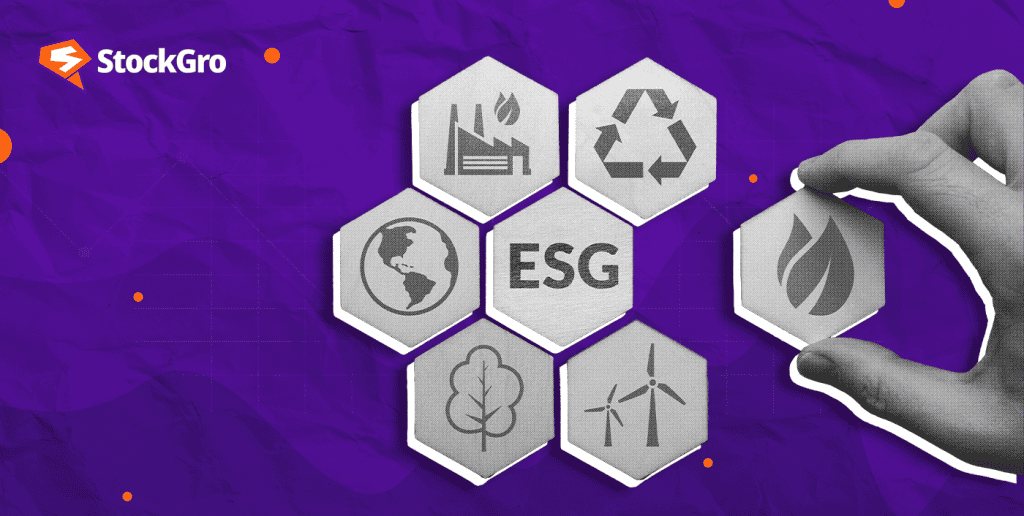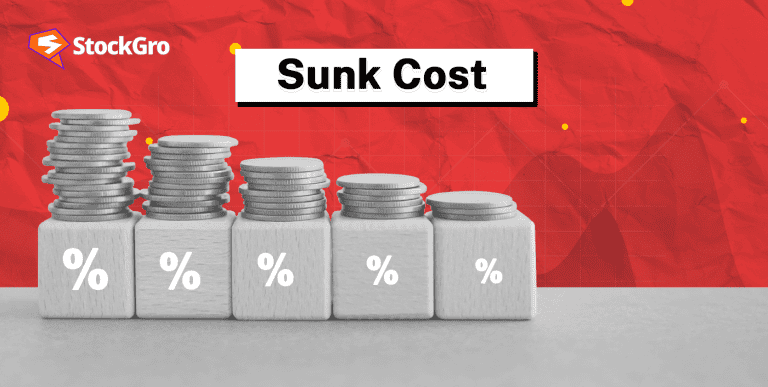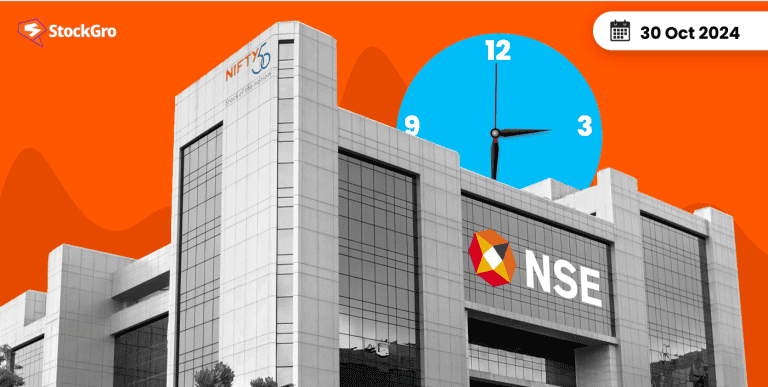
Humans are one of the most complex, powerful and intellectual animals on this planet. They have evolved over several eras and transformed their lives with innovations and business. However, this transformation also had some ill effects on the overall earth and humanity.
Humans exploited the earth’s environment to the extent that their crucial resources started depleting, and global warming picked up at an unprecedented pace. As of September 2024, 99% of the world’s population resides in dangerously polluted spaces. Moreover, the inequality of resources and money is widening in society.
These reasons are gradually catching people’s attention in the modern era. The ESG investing framework is one of the measures evolved to combat these issues. It focuses on considering investments in a holistic approach. It is made of various matrices, strategies, and investment instruments. Let’s explore the ESG investments in detail.
What is ESG investment?
The term ‘ESG’, is the abbreviation for environment, social and governance. It is investing psychology that focuses on a company’s combined efforts to manage its regular operations and finances while focusing its duty towards the ESG elements. Moreover, the company capable of putting in such efforts is usually perceived to sustain a longer run.
ESG investing meaning suggests that focusing on monetary profitability shouldn’t be the only goal of a business. It should strive towards managing its harmful effects on the environment, society and overall governance. Evaluating these efforts is made possible by the ESG rating provided by third-party rating agencies.
Must read: Incorporating Environmental Sustainability into Financial Literacy Education
ESG metrics
There are three key matrices (aspects) that form the base for ESG rating for any company. These are:
- Environment
Businesses procure all of their core raw materials from nature. However, its harmful production techniques, wastage, imbalance in the use of resources, and other activities have a grave impact on nature.
ESG rating analyses the measures taken by companies to reduce this harmful impact and contribute to the solution for environmental issues. It includes the company’s waste management, efforts to reduce greenhouse gas emission, climate policies, carbon footprints, environmental regulation compliance, etc.
- Society
The society constitutes people, organisations, and their materialistic aspects, such as money, etc. Businesses use them to facilitate their purpose in various forms, such as employees, customers, suppliers and many more. Due to this, companies should also not forget about their responsibilities towards the society.
This matrix includes the evaluation of aspects such as Company Social Responsibility (CSR) efforts, employment generation, philanthropy, national duty, etc. It is highly related to a company’s sustainability because of its stakeholders.
- Governance
A company is made of various aspects, and respecting them is a crucial duty for the company. The governance factor evaluates a company’s policies, business structure, risk management, and structural facets.
ESG investments in India
India is perceived to be suitable for ESG investing due to its large population, positive economic growth, environmental diversity, widening income inequality, etc. Over the past few years, investment horizons, psychologies, and instruments have evolved in India. ESG investing is also one of the modern trends. Various ESG investment avenues in India are:
- Equity market
Investors ascertain the ESG score provided by rating agencies, like CARE, Crisil, MSCI, etc. Stocks of companies with potential scores are purchased by the ESG investors. Moreover, separate indices for ESG are also introduced in India. For example, NIFTY 100 ESG includes the top 100 listed companies with the highest ESG score.
- Mutual Funds
These are pooled funds invested in the different instruments like equity shares, bonds, debentures, etc., of the company with high ESG scores. Investors prefer it due to its long-term objectives and risk management. Apart from regular mutual funds, ESG Exchange-Traded Funds (ETFs) are also potential diversification options for investors.
Sustainable investing vs ESG investing
Investors may confuse sustainable investing with ESG investing due to some overlapping aspects. However, they differ, majorly as follows:
- In this investing framework, the inventors assess a company’s performance in the three key matrices, and it is standardised across various companies. Investors expect that managing them will help companies sustain longer in the market. In ESG investments, factors such as employment generation, deforestation efforts, hierarchy management, etc., will be considered.
- On the other hand, sustainable investing is a broad umbrella concept, and ESG investments can be a part of it. Other than matrices of ESG, it includes aspects such as ethical investing. In the sustainable investing aspects like the company’s moral stand in crucial situations, clean technology, community developments, etc.
An interesting read: Sustainable and Ethical Investing
ESG investing strategies
There are several strategies developed over the years by industry experts and other investors. The main focus of evaluating the company’s contribution to society, environment and governance stays intact. However, the methods for its achievement differ. Some of the popular ESG investing strategies are:
- Positive vs negative screening
Screening refers to the selection of a specific set of companies. It is employed in both positive and negative ways.
- In positive ways, the screened companies may have high ESG scores, good market reputation or active efforts that encourage investors to invest in them.
- In contrast, the negative screening selects a set of companies that should be avoided while investing due to their low ESG scores or ill actions. For example, in the NIFTY 100 ESG index, the companies involved in gambling operations, tobacco-related activities and controversial weapons are excluded.
- Activist investing
This strategy can be usually used by affluent investors. In this, when a company is not adhering to ESG protocols or malpracticing to forge its efforts, the investor seeks entry into the management. Through equity, a significant ownership stake of a company is acquired by the investor, and later, reforms are carried out by such investor or group of investors. - Portfolio tilt
In this strategy, the investors follow a sector weightage or risk weightage of an index. However, they tilt or change the weightage of ESG investments in it. They would provide higher emphasis on the companies with better ESG scores in their portfolio. For example, investors can base their portfolio on the NIFTY 50 index, follow the sector allocation but tilt the weightage based on higher ESG score stocks.
- Themed investments
Themes in ESG can be renewable energy, waste management, agricultural technology, etc. Investors can focus on the companies operating specifically in the product manufacturing or services of such themes and assign significant weightage to them in the portfolio.
Way forward
ESG investing is a modern framework suitable for modern issues of environmental imbalance, societal divide and corporate governance. Understanding various facets of it can help investors diversify their investments and contribute consciously to overall welfare efforts.
Check this out! ESG: A new formula for investing success?
FAQs
- What is ESG investing?
It is a framework used to invest with a holistic view, focusing also on the non-monetary aspects of the investment. ESG is the abbreviation for environmental, social and governance. In ESG investing, focus is placed on the evaluation based on the company’s efforts towards improving these aspects. Having such a holistic approach may benefit investors in the long term.
- How is sustainable investing different from ESG investing?
ESG and sustainability are usually linked together. However, as investment styles, they are different in their core nature. The ESG framework analyses the three concerned areas with focus. However, sustainability can be a broad view, incorporating aspects like ethical consideration and responsibility.
- What is Activists strategy in ESG?
Usually, this strategy is employed by affluent investors to make a significant impact on the company’s overall operations and policies by purchasing a crucial stake in them. After purchasing the stake, the investor exerts pressure on the management to focus on the ESG area, which was missed previously by them.
- What is an ESG mutual fund?
It is a separate category of mutual funds that invests in instruments, such as equity shares, bonds, debentures, etc., of companies that have compatible ESG scores. The third-party agencies rate the companies based on environmental, social and governance aspects. It seeks to provide diversification for the investor’s portfolio.
- What are ESG matrices?
The ESG framework is based on its three main matrices. They are environment, society and governance. The overall procedure of ESG investing revolves around these three areas that are usually neglected but are crucial to analyse the holistic aspect.

